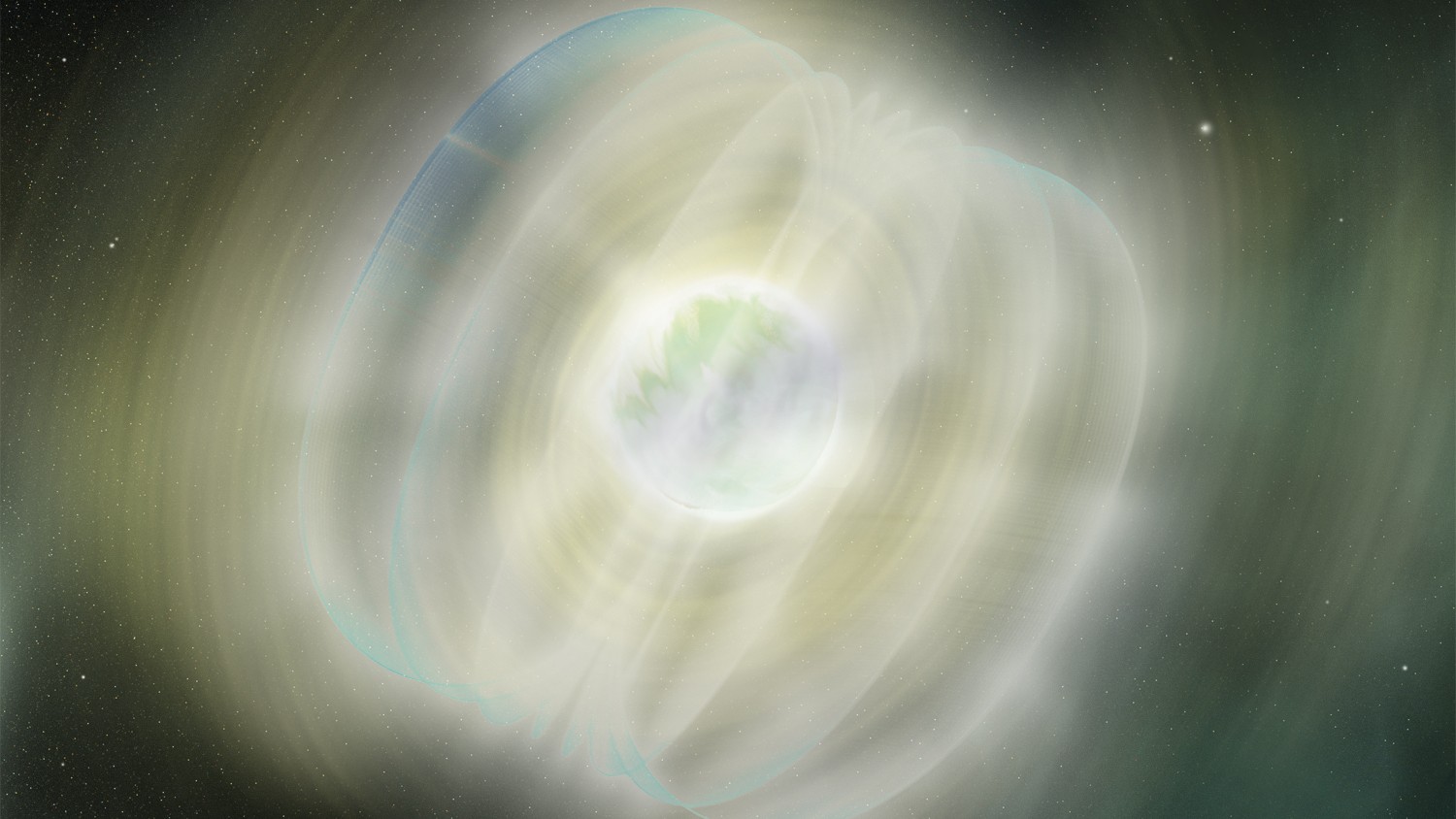Scientists think they saw an asteroid crash into a dead star — and release one of the brightest explosions in the universe
Astronomers proposed a new mechanism behind mysterious fast radio bursts (FRBs), and it involves unlucky asteroids crashing into neutron stars.

The briefest, brightest explosions in the universe may be triggered when unlucky asteroids smash into collapsed stars, new research suggests.
For years, astronomers have been puzzled by a type of extremely powerful explosion known as a fast radio burst (FRB). These bursts occur randomly throughout the sky, last only a few milliseconds and represent some of the most powerful explosions in the universe.
But in 2020, astronomers caught a lucky break when they discovered an FRB in our own galaxy. Follow-up observations located the source of the FRB: a magnetar. Magnetars are a special kind of neutron star (an ultradense remnant of a gigantic, exploded star), and they have the strongest magnetic fields in the universe. The strongest magnetars have magnetic fields quadrillions of times stronger than Earth's.
Shortly before the FRB appeared, astronomers saw something strange happen to the magnetar: It glitched.
Magnetars, like all neutron stars, spin incredibly quickly and precisely. This particular magnetar had a rotation period of just 3.9 seconds, which is pretty impressive considering that it weighs more than the sun but is crammed into a ball only a few miles across. When magnetars glitch, they suddenly change their rotation speed. This naturally releases a tremendous amount of energy that could potentially power a fast radio burst.
Related: A messy black hole may have just triggered the largest explosion in the universe
Despite observational evidence that magnetar glitches lead to the appearance of FRBs, scientists still haven't been able to figure out the precise mechanism behind the phenomenon, although several ideas have been proposed. In a paper published May 25 in the journal Monthly Notices of the Royal Astronomical Society, a team of researchers suggested a surprising scenario: They think that when a magnetar releases an FRB, we are seeing the death throes of an asteroid getting torn apart.
Get the world’s most fascinating discoveries delivered straight to your inbox.
The scenario goes like this. A random iron-rich asteroid happens to wander too close to a magnetar. The magnetar's intense gravity then rips the asteroid into thousands of pieces. Some of those pieces then go into orbit around the magnetar, which affects the dead star's angular momentum, changing its spin rate and leading to a glitch.
The remaining pieces of the asteroid fall from their orbit and start to make their way to the magnetar’s surface. As they do, they cross through the region of the magnetar's most intense magnetic fields. Because the asteroids are rich in iron, they have a lot of electric charges. The interaction of the electric charges moving at high speed through those incredibly strong magnetic fields leads to the formation of radiation. It's this radiation that we see as a fast radio burst.
This scenario is appealing because astronomers have also seen FRBs associated with anti-glitches, which happen when a magnetar's spin suddenly slows down. This newly proposed scenario can explain the anti-glitch as well. All it takes is for the asteroid to be moving in the opposite direction as the spin of the magnetar when it gets torn apart.
Of course, this is just one possible explanation for one type of FRB. Recent research has suggested that there may be more than one mechanism behind FRBs, some of which repeat at regular intervals and others of which flash just once before disappearing forever. More research is required to fully understand these mysterious deep-space signals.

Paul M. Sutter is a research professor in astrophysics at SUNY Stony Brook University and the Flatiron Institute in New York City. He regularly appears on TV and podcasts, including "Ask a Spaceman." He is the author of two books, "Your Place in the Universe" and "How to Die in Space," and is a regular contributor to Space.com, Live Science, and more. Paul received his PhD in Physics from the University of Illinois at Urbana-Champaign in 2011, and spent three years at the Paris Institute of Astrophysics, followed by a research fellowship in Trieste, Italy.


